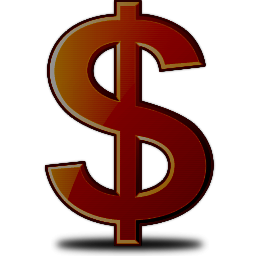Greedville
The Short Name for the Loooong Game
From Wikipedia
The Aldrich–Vreeland Act was passed in response to the Panic of 1907 and established the National Monetary Commission, which recommended the Federal Reserve Act of 1913.
On May 27, 1908, the bill passed the House on a mostly party-line vote of 166–140, with 13 Republicans voting against it and no Democrats voting for it.[1] On May 30, it passed in the Senate with 43 Republicans in favor and five Republicans joining 17 Democrats opposed. President Roosevelt signed the bill that same night.[2]
[It is likely this was promoted and argued for by the same people who in 1910 met at Jekyll Island to organize their campaign to control banking. See Video Interview with G. Edward Griffin.]
The act also allowed national banks to start national currency associations in groups of ten or more , with at least $5 million in total capital, to issue emergency currency. These bank notes were not to be backed by just government bonds, but also just about any securities the banks were holding. The act proposed that this emergency currency had to go through a process of approval by the officers of these national currency associations, and then once approved were distributed by the Comptroller of the Currency. However, it is possible that because there was a 5 percent tax placed on this emergency currency for the first month it was "outstanding" and a 1 percent increase for the following months it was "outstanding," no bank notes were issued. Another possible explanation why the emergency currency never issued might have been because it wasn't necessary to do so.[3]
Congress modified and extended the law in 1914 when British and other foreign creditors demanded immediate payments, in gold, of amounts which would ordinarily have been carried over and paid through exports of commodities.
Senator Nelson W. Aldrich (R-RI) was largely responsible for the Aldrich-Vreeland Currency Law, and he became the Chairman of the National Monetary commission. Furthermore, the law permitted Senators and congressmen to become involved in the affairs of banks.
A usage of the law occurred at the outbreak of the World War I in 1914 when the first great financial panic of the twentieth century befell the world, necessitating the closure of the New York Stock Exchange. Secretary of the Treasury William Gibbs McAdoo appeared in New York City and assured the public that ample stocks of emergency bank notes had been prepared in accordance with the Aldrich–Vreeland Act and were available for issue to the banks. As of October 23, 1914, $368,616,990 was outstanding.
The Federal Reserve Act of December 23, 1913 took effect in November, 1914 when the 12 regional banks opened for business. Ultimately the emergency currency issued under the Aldrich-Vreeland Law was entirely withdrawn.
1. ^ "New currency bill passes the House". The New York Times: p. 1. May 28, 1908.
2. ^ "Pass currency bill by Aldrich strategy". The New York Times: p. 1. May 31, 1908.
3. ^ Wells, Donald. The Federal Reserve System: A History. Jefferson: McFarland and Company, 2004.
The Federal Open Market Committee (FOMC), a component of the Federal Reserve System, is charged under United States law with overseeing the nation's open market operations.[1] It is the Federal Reserve committee that makes key decisions about interest rates and the growth of the United States money supply.[2] It is the principal organ of United States national monetary policy. (Open market operations are the buying and selling of United States Treasury securities.) The Committee sets monetary policy by specifying the short-term objective for those operations, which is currently a target level for the federal funds rate (the rate that commercial banks charge between themselves for overnight loans). The FOMC also directs operations undertaken by the Federal Reserve System in foreign exchange markets, although any intervention in foreign exchange markets is coordinated with the U.S. Treasury, which has responsibility for formulating U.S. policies regarding the exchange value of the dollar. Now visit the site below and discover what a dollar is worth today.



